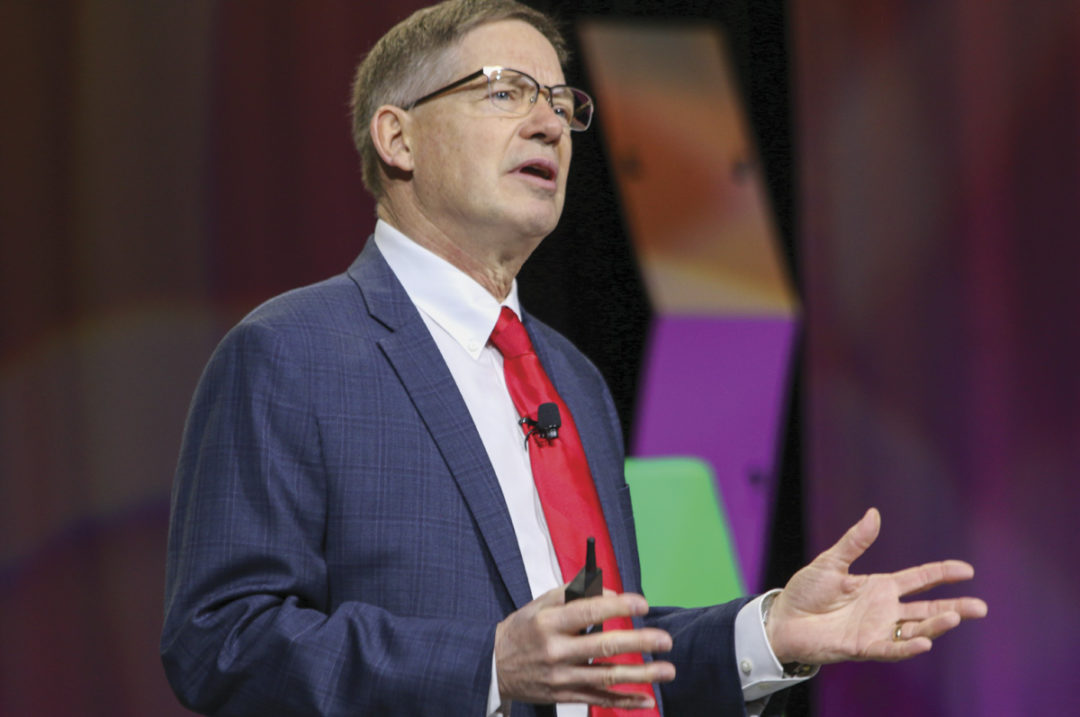After coming out of 2022 with record beef production, we are starting to transition into tighter supplies as producers begin to rebuild their herds, CattleFax analyst Kevin Good told attendees at the National Cattlemen's Beef Association Annual Convention and Trade Show in New Orleans.
Cow slaughter in 2022 was up 10% from the previous year, equaling a culling rate of 13.5% – 1% higher than any year in history. While Good predicts that cow liquidation will substantially decline over the next year, there will still be some mild liquidation on the beef side until drought conditions lessen and forage availability rebounds.
Good says beef-on-dairy production is trending higher at a very fast rate. “This past year, about 7 percent of the cattle we harvested would have been beef-on-dairy cross in the fed mix,” he said. If this trend continues over the next couple of years, potentially by 2025 or 2026, beef-on-dairy cattle could comprise 15 percent or more of the U.S. harvest mix.
Total feeder cattle drops
Good said the total feeder cattle supply is down 1.3 million head, and that not only are there less cattle on feed going into early 2023, but numbers of replacements in the first half of this year will translate into tighter supplies all the way through the second half of this year.
North American cattle market dynamics are also changing. Mexico’s feeding industry has expanded, meaning they are sending less live cattle and more product into the U.S. “From 2010, we imported 100 million pounds of beef from Mexico. Today that number is going to be 700 million-plus, so more of those cattle generally are going to stay south of the border, and we're going to bring more product in as we go forward.” Canadian beef producers will likely continue to utilize their own pen and shackle space, meaning most of their cattle will stay north of the border.
Total U.S. beef slaughter numbers are going to decrease as herds start to rebuild. “We are in that stage in the cycle where supplies will get tighter consistently as we go over the next three to four years,” Good said. “The bottom line is a huge drop in production – 1.3 billion pounds, close to 5 percent. And if we go from our peak in 2022 to our forecast out in 2025 for a long-term view, we would suggest that drop is going to be a full 10 percent.”
Exports and imports
2022 was a good year for exports, with record tonnage and record value exported. With tighter cattle supplies anticipated for the next few years, it may be difficult to export as much product as we have in years past. “We would still suggest the dollar value will be record high again this year but probably a little bit less tonnage,” Good said. “We’re still optimistic that we'll continue to see gains into China, primarily, and be able to hold our own in South Korea and Japan.”
Imports are likely to increase this year as our domestic slaughter numbers decrease. Good continues to expect more product coming in from not only Mexico but South America as a longer-term trend. Australia has built their herd back up, so they will also have more product entering the global market.
Beef prices
Demand continues to be historically strong. “We need to recognize that the proof in the pudding here is that the price held up despite the fact that we had bigger supplies.”
Good estimates that beef retail prices are going to hold relatively steady in 2023, with a 1% increase on the horizon. “That doesn't sound like much when we're talking about inflation continuing to be at 4 to 5 percent for the year, so we're losing a bit of ground there,” he said. “We still have plenty of dollars, and we see that margin realignment that's going to allow for higher values for all classes of cattle.” Tighter supplies and continued strong demand will support wide price spreads, which will continue to support premiums.
Good projected that fed cattle prices would range from $150-$170 throughout the year, with a $158 average fed cattle price and a $270-per-hundredweight cutout price.
Over the next few years as the cattle herd builds back, cull cow prices and all beef prices will rise as the U.S. cycles into tighter supplies, giving more market leverage to the producer.







